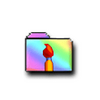A bar that locks to your screen, allowing you to create shortcuts
A bar that locks to your screen, allowing you to create shortcuts
Vote: (38 votes)
Program license: Free
Developer: Desktopsidebar
Version: 1.05.116
Works under: Windows
Vote:
Program license
(38 votes)
Free
Developer
Version
Desktopsidebar
1.05.116
Works under:
Windows
Pros
- Outlook integration for direct access to emails and calendar
- Customizable interface with various pre-installed and downloadable components
- Auto-hide feature to reduce desktop clutter
- Controls for media players for integrated entertainment management
- Potentially reduces need to open multiple browser tabs
Cons
- Can consume a notable percentage of CPU resources
- May experience stability issues when adding new components
- Lacks support for integration with non-Outlook email clients like Thunderbird
Efficient Desktop Enhancement Tool
Desktop Sidebar provides an additional interactive edge to the Windows workspace by introducing a customizable sidebar equipped with a wealth of handy tools and applets. Aimed at enhancing productivity and convenience, this software serves as a central hub for quick access to various system functions, dynamic information feeds, and entertainment controls.
Seamless Integration with Outlook
A standout feature of Desktop Sidebar is its seamless integration with Microsoft Outlook. Users have immediate shortcuts to their email inboxes, previews, calendar events, and notes, making it exceptionally useful for individuals who manage multiple email accounts across IMAP and POP protocols, including offerings like Hotmail. The interface's cohesiveness with Outlook potentially saves a tremendous amount of time for users by bringing essential communications closer to their workspace.
Customization Options
The appeal of Desktop Sidebar lies in its highly customizable nature. Users have the liberty to personalize their sidebar experience with a variety of pre-installed panels, such as a news ticker that can be tailored to display the latest stories of interest. Window Media Player and Winamp controls can also be integrated, allowing users to manage their music without interrupting their workflow. For those mindful of their system's resources, a stats bar presents real-time data on RAM and CPU usage.
Convenience and Accessibility
Flexibility is a key design principle of the Desktop Sidebar, as it can be configured to remain constantly visible or to auto-hide when not actively in use. This feature provides users with the ability to tailor the sidebar's presence according to their preferences, avoiding unnecessary desktop clutter.
Expanded Component Selection
For users looking to extend the capabilities of the Desktop Sidebar, additional components are available on the software's website. These include an IP address monitor revealing detailed connection statistics and a Virtual Desktop Panel for effortlessly switching between multiple desktop backgrounds. The software supports the addition of other niche components to cater to user needs.
Concerns Regarding Resource Consumption
One of the downsides of using Desktop Sidebar is its noticeable CPU resource consumption, which might deter users who prioritize system performance over desktop widgets. The application's process can occupy around 20% of CPU capacity, which could be substantial on less powerful computers. As such, users should weigh their need for such a tool against the computational overhead it introduces.
Technical Support and Stability
While Desktop Sidebar aims to introduce efficiencies, it's noteworthy that the addition of certain new components has historically resulted in application instability or crashes. This issue underscores the need for potential users to consider the stability of such enhancements, although recent updates have addressed some of these concerns.
Conclusion
Desktop Sidebar is a mixed bag offering convenience and customization for those who heavily rely on Outlook and enjoy integrating widgets into their daily computer use. While it may not be groundbreaking in juxtaposition with other toolbars or sidebar solutions, it provides a robust set of email management tools and a rich selection of components. Users interested in a centralized desktop tool to streamline their digital workflow might find Desktop Sidebar an asset, even if it comes at the cost of some system resources.
Pros
- Outlook integration for direct access to emails and calendar
- Customizable interface with various pre-installed and downloadable components
- Auto-hide feature to reduce desktop clutter
- Controls for media players for integrated entertainment management
- Potentially reduces need to open multiple browser tabs
Cons
- Can consume a notable percentage of CPU resources
- May experience stability issues when adding new components
- Lacks support for integration with non-Outlook email clients like Thunderbird


